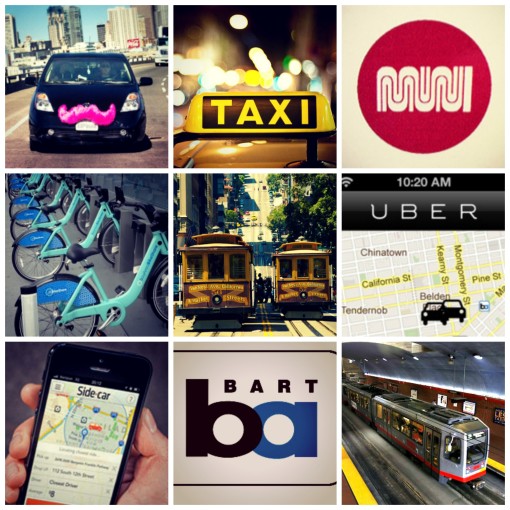Being new to New York, I am being constantly asked to compare New York with San Francisco. However, being just four months into it, I always reply with some version of “You can’t really compare the two”.
That said, there are some things I miss about San Francisco; my mom, my friends and the weather (sometimes) being three easy answers. And though it’s early, I can confidently say that I miss being in the atmosphere of change that technology brings to the Bay Area.
Technology has made San Francisco into testing ground for new ways of getting old things done; it has allowed easier access to relevant information and has forced more-traditional industries to re-examine how they’ve been doing business.
If you spend more than a couple days in San Francisco, that is most apparent in the number of transportation choices you have.
For the majority of my time in San Francisco, I was lucky enough to have a garage for my car. I was also grateful to be located near the center of the city, so my commute to work was a relatively short bike ride, jumping on the F-Market, or taking the Muni Metro (underground subway) a few stops. Going to the airport involved calling in a favor, taking a shuttle, or jumping on the BART.
To a tourist or a new SF denizen, the available transportation services open to the public (outside of renting a car) may be the most diverse in the country.
San Francisco’s public transportation includes Muni buses, Muni subway, BART (the best way to get to and from SFO), and CalTrain. Personally, I’ve never had a problem, but if you’re trying to get to the Sunset, Balboa Park, or the outer neighborhoods of San Francisco, you may find yourself frustrated.
San Francisco also has a fleet of cute but extremely fucking SLOW trolleys, light rail and cable cars. These last three are great for “touristical” experiences, or a nice ride to the flea market on Sundays, but if you need to get anywhere, these aren’t the most efficient way of getting around the town.
Taxis are available if you can get one. Here’s where technology has really disrupted the traditional. Cabs now have to grudgingly share the road with peer-to-peer ride sharing services Lyft, Sidecar, and Uber. These services all work in the same manner – by downloading their mobile app, registering, searching for a car nearby, and wait by the curb for the car to pick you up.
After you’re done with them, you pay the fare (on Uber) or suggested donation (Sidecar and Lyft) and you can rate your experience all from inside the app.
Of the big three, I prefer Lyft. Their application/vetting process seems more rigorous than Sidecar’s and I’m a sucker for their marketing of pink mustaches and fist bumps.
If you’re into controlling your own destiny and want to get behind the wheel, SF also has City Car Share and Zipcar which are car sharing services where you can rent a vehicle by the hour. It’s basically a do-it-yourself car rental. Pick up a car at one of their many locations (usually a parking lot or gas stations), zap your membership car, and you’re good to go. City Car Share and Zipcar pay for gas and insurance.
Despite what my Facebook feed may tell you or what you might read in the comments at sfgate, San Francisco is one of the friendliest U.S. cities for bicyclists. Long overdue after a series of pumpfakes, San Francisco just recently launched their own public bike share program – the Bay Area Bike Share.
Too much to take in? Just walk.














